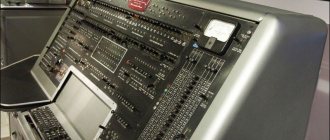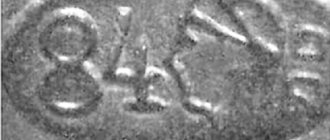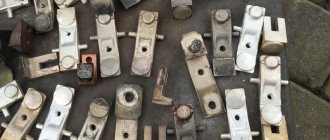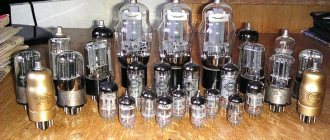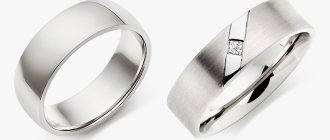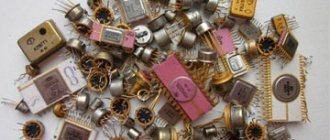The “gold rush” in a modern way is not a search for a promising vein in the vastness of Siberia, followed by exhausting digging, washing out grains of the coveted metal.
To become the owner of precious metals today, you need to buy household radio and electrical appliances from the population that have lost practical interest, and, armed with a “young chemist’s” kit, engage in refining - the purification of secondary precious metals (SPM).
If you have information about which household devices and office equipment contain the largest amount of gold, silver, platinum, platinum group metals (palladium, iridium, etc.), refining becomes not just an entertaining chemical experience , but a cost-effective production.
The realities of the modern economy dictate that manufacturers use minimal precious metals in the manufacture of various gadgets, which cannot be said about the era of active construction of communism.
Therefore, household appliances produced in the Union, or more precisely, elements of devices, contained a large amount of precious metals. It is this equipment that is the target of buyers.
Why are gold and other precious metals used in equipment?
Gold, platinum, silver, as well as other valuable metals (copper, brass, etc.) are unsurpassed conductors, which ensures the uninterrupted functioning of high-tech computer and other devices.
In addition to this technical parameter, precious metals do not oxidize .
This characteristic, in turn, directly affects a significant increase in the service life of the same high-tech devices, which include various equipment:
- TVs;
- refrigerators;
- washing machines, etc.;
- office equipment (printers, faxes, etc.).
USSR TVs
This gadget was previously released in two versions : a tube device and a transistor device.
It makes no sense to buy tube TVs, since precious metals are contained in these devices only in the beam tetrode - the largest lamp marked 6P36S, 6P44S, 6P45S, GU50.
Another thing is transistor TVs. There is an abundance of precious metals here.
Buyers are interested in the following elements :
- microcircuits encased in plastic housings;
- transistors marked KT814, KT940, KT310, KT502, KT503;
- AL307 LEDs in the channel switching unit;
- “yellow” (according to the color of the case) transistors KT203, located in the SMRK unit and in some variants (models) on other boards;
- capacitors KM-1;
- “yellow”, sometimes “red” capacitors K10-17, etc.
Any product is subject to careful inspection, since products of this type, produced in the Union, were distinguished by a variety of models .
In addition, one device could have different configurations, both containing precious metals and not using them.
We bring to your attention a table that shows which USSR TVs contain valuable elements and how many there are. The mass of precious metals in one product is given in grams.
| Model | Au (gold) | Ag (silver) | Pt (platinum) | Pd (palladium) |
| Knight | 0,3412 | 7,4606 | 0,622 | 0,3199 |
| Horizon-Ts355 (Ts355D) | 0,6785 | 3,7443 | 0,43 | 0,318 |
| Rainbow-719-1 | 0,3135 | 7,1795 | 0,6294 | 0,0339 |
| Rubin Ts202 (Ts208) | 0,4443 | 3,6787 | 0 | 0 |
| Electron-736 | 0,24 | 6,33 | 0,225 | 0,0338 |
If we compare the content of precious metals in Soviet TVs “Horizon”, “Vityaz”, etc. with imported ones, it is worth noting that a device manufactured in Japanese and Chinese, Taiwanese or Korean assembly contains only 0.1474 g of gold and 2.4859 g of silver.
Generator lamps of the GI, GMI, GS, GU series
Lamps containing precious metals.
- GS-23B, GS-36B, GI-19B, GMI-2B, GMI-4B, GMI-5, GMI-6, GMI-6-1, GMI-7, GMI-7-1, GMI-10, GMI- 11, GMI-14B, GMI-19B, GMI-21-1, GMI-24B, GMI-26B, GMI-27A, GMI-27B, GMI-32B, GMI-32B1, GMI-38, GMI-42B, GMI- 83V, GMI-89, GMI-90
- GU-19-1, GU-29, GU-34B, GU-34B1, GU-43A, GU-43B, GU-50, GU-70B, GU-71, GU-72, GU-73B, GU-73P, GU-74B, GU-78B, GU-84B
- GKD1-600/5, TGI1-2500/50, TGI1-2000/35, LI-604 K-1, LI-705, LI-702-1, LI-703, 5 MHz resonator, Quartz K3, RR-7 arrester, Klystron K-12, Klystron K-351, Klystron K-352
- We buy generator lamps manufactured before 01/1991. The price of lamps is influenced by the presence of the diamond sign and a number of other factors.
- We do not buy radio tubes from USSR TVs without packaging or used radio tubes. More details on the “Lamps” page.
Computers
Soviet-style electronic computers contain in their design many capacitors marked KM, K10-17, as well as “yellow” microcircuits in plastic or ceramic shells . These are elements containing precious metals.
There are also gold-plated connectors, contact pads and other elements suitable for refining.
In computers from abroad, the processor is valued. There is a particularly high gold content in processors housed in a lilac ceramic case .
We suggest that you familiarize yourself with the table with the content of precious metals in some computers and their processors. The mass is also given in grams per device.
| Model name | Au | Ag | Pt | Pd |
| Elbrus-1-KB | 2668 | 7737,4 | 259 | 639 |
| Electronics-60 | 17,93353 | 29,85809 | 6,46067 | 5,86536 |
| ШК-1700.02601 | 1384,33 | 1679,95 | 83,01 | 15,88 |
| SM1307.604 | 113,9996 | 96,5643 | 0,0974 | 2,0039 |
| Personal computer | 10,972 | 5,84 | 0,082 | 0,267 |
| EC-1842.03 | 12,886 | 13,839 | 0,481 | 1,387 |
| DVK-2M | 13,185 | 26,0418 | 5,0743 | 2,8305 |
Foreign-made computers manufactured before 1990 contain elements similar to domestic parts marked K10-17. These capacitors are accepted at the same price at which domestic parts are purchased.
RELAY
- RES 6
- RES 9
- RES 10
- RES 15
- RES 22
- RES 32
- RES 34
- RES 44
- RES 47
- RES 48
- RES 49
- RES 54
- RES 55; RES 64
- RES 59
- RES 60
- RES 78
- RES 80
- RPS11/5
- RPS18/7
- RPS32B
- RPS34A
- RPS42B
- RPV 2/7
- RP4, RP5, RP7
- RGK15
- REC 23
- PPI
- RKM 1
- R154POT
- DP12
- REN 33
Cell Phones
The old cell phone that many of us have lying around unused at home contains:
- Au – 0.024 g;
- Ag – 0.25 g;
- Pd – 0.009 g;
- Ta (tantalum) – 0.4 g.
And this is not counting non-ferrous metals (copper, tin, etc.). Precious metals are found in circuit boards and in all live contacts of cell phones.
From 40 cell phones that have lost practical interest, the same amount of gold is mined as is mined from 1 ton of gold ore.
Where to look for radio components containing precious metals?
In old household appliances, especially office equipment.
The development of science and technology today is surprising. The greatest success has been achieved in the area of reducing the cost of the final product. The cost of branded smartphones, TVs, laptops is several times lower than their final cost. This allows both manufacturers, dealers, intermediaries to earn money, and is a stimulator for economic growth.
But such progress has been achieved due to the reduction in the cost of production of household appliances. This was made possible, among other things, by significantly reducing the use of precious metals.
Old household appliances, especially office equipment, widely used gold, silver, platinum and platinum group metals in their production. Therefore, simply throwing them into a landfill is wasteful.
Of interest is not so much the device itself as its components - radio components. They are the source of precious metals. It is most profitable to sell radio components for scrap that were produced in the USSR.
Printers
This type of office equipment, from a profitability point of view, is the most unprofitable investment .
Of course, this equipment also contains precious metals.
In particular, gold-plated contacts of the print head and cartridges.
Copiers - photosensitive elements - are coated with noble metal.
However, the amount of precious metals in printers is so negligible that “the game is not worth the candle.” For example, foreign equipment in this category contains 0.01 g of gold and 0.8 g of silver. A domestically produced product, model CM6329 02M, boasts only 0.01 g of “yellow” metal.
Sales to specialized enterprises
The era of gloomy traders, who, as a rule, stood near currency traders in spontaneous and organized markets with a sign “I will buy used televisions, radio equipment...”, has sunk into oblivion.
Naturally, today many people also work according to “gray” schemes, but in a more organized way.
In any case, it is advisable to hand over radio components containing precious metals to enterprises that are engaged in recycling at the official level - that is, they have the necessary licenses and other regulatory documents.
The benefit is obvious.
Firstly, fraud is excluded: the enterprise, as an official buyer, will not cheat on the weight of the delivered raw materials.
Secondly, the collector of recycled radioelements will receive a fair price for his “goods”.
Thirdly, a transaction with an official enterprise has documentary support .
You can find the necessary enterprise on the World Wide Web: enter the name of the city and the refinery into the search line (as an option, advertisements in local newspapers, radio, television).
Regarding the price, it all depends on the labeling of radio components that are handed over to the “electronic waste” collector. If we are talking about capacitors (foreign or domestic production), then a kilo or two of such “products” will ensure a comfortable life for a fairly long time .
Refrigerators
It doesn’t matter whether the household unit was manufactured in the Union or has been released from the assembly line at the present time, all refrigerators, or rather thermostats, have silver contacts, as well as soldering with PSR solder.
Consider the most popular brands :
- Nord-155 contains 0.0012 g Au and 6.21 g Ag;
- The Smolensk brand refrigerator can boast the same amount of precious metals;
- Mir-101-1 – 3.177 g Ag;
- Minsk-126 – 2.38 g Ag;
- Zyl - 1.326 g of the same metal;
- Don – 1.8 g Ag.
In general, it is also quite meager . Whether it’s televisions or high-precision equipment, not to mention equipment intended for the military-industrial complex of the USSR.
Tape recorders and radios
These units, produced in the Union, also had elements containing precious metals in their designs.
The most valuable items
in tape recorders :
- “black” microcircuits in a plastic shell (174un7 and other parts);
- powerful transistors marked KT802 and similar elements - KT814, KT503, KT203, KT3102;
- “yellow” chips located in the indicator controller.
Such elements are found in the legendary Mayak tape recorder of the 80s, as well as in devices similar to it .
In tape recorders, precious metals can also be contained in capacitors, relays, switches, and other elements; noble metals in radiols are contained in capacitors.
In addition, silver contacts of range switches are often found. Let us consider in the table the content of valuable elements in some tape recorders.
| Model | Au | Ag | Pt | Pd |
| Electronics-004K | 1,04 | 6,319 | 0,0705 | 0,1067 |
| Sonata | 0,3129 | 0,6072 | 0,001 | 0,0035 |
| Mayak-233 stereo | 0,1853 | 0,96935 | 0 | 0 |
| Legend-404 | 0,688 | 0,0632 | 0,001 | 0,0042 |
| Belarus-302 | 0,0308 | 0,2174 | 0,001 | 0,1493 |
Switches, toggle switches, buttons
Switches containing precious metals.
- PG2, PG5, PG7, PR1, PR2, PM2-1, PkP2-1, PKN4-1, P2KnTA, PK1S, PK1E, PK2S, P1T3-1V, P1T4-1V, P1M9-1V, P1M11-1, P1M12-1, PT 2-40, PT 3-40V, PT 33; 55, PKn-2.4-1V, PM2-1V, PKn-4-1V, PT 8-1V,3V, PT 8-1V,3V, PT 8-1V,3V, PT 8-1V,3V, PT9- 1, PT11-1, PT13-1, PT23-1, PT25-1, PT27-1, MP-12, P1T-1-1, P2T-1-1V, P2T-1,7,14T,19, P2T- 1,7,14T,19, P2T-1,7,14T,19, OSP2T-1,2,7, PKn-8-1V, PKn-8-2V, PKn-8-3V, PKn-8-4V, PKn-19-1V, PKn-105-1V, PKn-107-8V, PKn-115-1V, PKn-125, PKn-150-1, P2Kn-1V,3V and P2KnTA-1,2,3,4V, P2Kn-1V,3V, P2KnTA-1,2,3,4V, P2Kn-1V,3V, P2KnTA-1,2,3,4V, P2KnT3V,T4V, P2KnT1,3,4V, P3PN-20, PP6, PP8, PP9, PP11, PPK-2-20, TV1-2, TV1-4, VBT, VDM, SHIV-25/4, SHIV-50/4.
- The switches and buttons listed are suitable for a specific month and year of manufacture. Certain series of switches were made with white and yellow leads, but are only suitable with yellow leads. With white leads, analysis is required.
- We do not buy switches of the MT series, certain MP series and similar ones in their entirety; they must be disassembled into silver-plated parts.
- Other switches require analysis.
Refining of precious metals
There are several ways to remove VDM from recycled equipment .
For home use, the electrolysis method is primarily suitable.
To do this you will need:
- capacity;
- hydrochloric or sulfuric acid as an electrolyte;
- a cathode made of lead or steel;
- an anode made of gold, in the case of refining of this particular precious metal;
- power supply providing alternating current.
In addition to electrolysis, precious metals can be “etched” chemically - using a mixture called “aqua regia”. This composition is a mixture of hydrochloric and nitric acids in a ratio of 3:1.
Refining of various items and parts is carried out in a way that will allow you to obtain the necessary elements with minimal losses.
Costs of separating gold from radio components
One liter of reagents costs approximately 300 rubles. 1 gram of isolated gold is valued at approximately 2500-3000 rubles. To get about 3 grams of yellow metal from KT605 transistors, for example, you will need 100 parts. Each of them contains 27 micrograms of valuable raw materials.
You can buy transistors for 15-20 rubles apiece. Spend about 2000 rubles, you will receive approximately 8000-9000 thousand. It is necessary to calculate the profitability of an enterprise. “Recycling” of some radio components is unprofitable.


